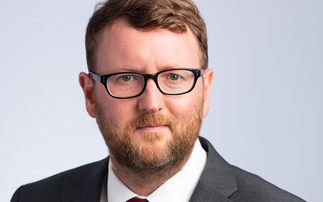Stephen Richards says government regulation will herald an ‘avalanche’ of DC scheme transfers to master trusts. He sets out his predictions and a word of caution.
Big changes are coming for workplace trust-based defined contribution (DC) schemes. In my Professional Pensions article in November 2018, I made what I thought was a pretty bold prediction: I envisaged an en-masse transfer of DC schemes to master trusts over the next five years. Admittedly, I thought that timeframe was a little aggressive. But, only two years on, with proposed new regulations set to force DC trustees to transfer to a master trust, that prediction looks likely to come good.
It is odd to think that in 2012 there were only 270,000 people saving for retirement in a DC master trust. By the time of my 2018 article, that number was over 10 million. By the end of 2019 it was over 16 million. At the same time, the number of DC schemes has been falling. However, the government and The Pensions Regulator want that number to fall much more quickly.
From 5 October 2021 the scope of the current 'value for members' assessment in the chair's statement will be extended for occupational DC pension schemes with assets of less than £100m which have been operating for at least three years. Assuming the changes go ahead as planned, trustees of these schemes must assess the value provided to their members on costs, charges and net returns against those of at least three other schemes. These three other schemes must have £100m or more in assets. In practice, this is likely to mean comparing a small DC scheme to master trusts.
If the trustees do not consider their scheme to offer good value for members in comparison, in the annual scheme return trustees will have to indicate whether they plan to wind up the scheme. If they do not decide to wind up, they will have to include their reasons for not doing so and the improvements they plan to make to the scheme. In practice, schemes will struggle to compare favourably and for most, wind up and transfer of assets looks inevitable. Indeed, the Department for Work and Pensions (DWP) has made clear that only in exceptional circumstances should schemes seek to improve rather than wind up. Where schemes cannot demonstrate value for members, trustees will be taking immediate steps to wind up and consolidate into a larger scheme.
The table below shows how occupational DC pension scheme numbers have fallen since 2012. In that table I also give my prediction for where those numbers are likely to go after the new regulations are introduced.
DC schemes with over 12 members
Source: TPR and Stephenson Harwood
The government is making these changes to increase consolidation in the DC market, encouraging smaller DC schemes to transfer into larger schemes. The government is concerned, rightly, that many smaller DC schemes struggle to achieve economies of scale and access to the services and investment strategies offered to larger schemes. The government sees the acceleration of consolidation in the DC market as a priority. If these proposed changes do not drive consolidation at a sufficient pace, the government will legislate to mandate it.
I would expect most of this consolidation to manifest as transfers to master trusts due to the growing presence of master trusts in the occupational pension saving market and the relative ease of the transfer process. In addition, trustees and employers can be comfortable that a master trust provides a reasonable standard of governance and quality for their members and employees given the authorisation regime that master trusts must satisfy. It may also result in cost savings for both employers and members.
However, forcing the winding up of DC schemes in one go will likely cause a capacity crunch in the DC market, with receiving schemes and DC advisers struggling with the onrush of requests. Whilst the largest schemes are still likely to receive top-quality advice and have a number of master trust suitors, smaller schemes may miss out.
In my experience, with the right people on board to offer support, transferring to a master trust can be carried out efficiently, but there can be some pretty serious pitfalls to look out for when transferring, including tax implications for members and even employer debt implications for sponsoring employers. At present, there isn't enough knowledge or guidance out there to make sure that hundreds of transferring schemes avoid these pitfalls. Master trust transfers have already been occurring at pace, and we are expecting that to accelerate further by the end of the year. Trustees and employers of occupational DC schemes may want to move quickly to avoid the rush.







